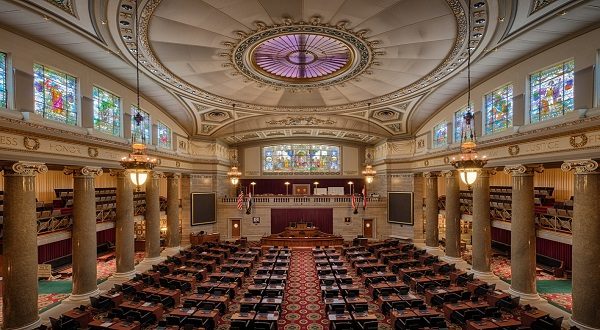
JEFFERSON CITY, Mo. (AP) Missouri’s candidacy filing period for Congress closed Tuesday without new voting districts in place, as the state’s Republican-led Legislature remained bogged down by disagreements.
Missouri is the only state where a congressional redistricting plan has yet to be either enacted or at least passed by lawmakers based on the 2020 census, though uncertainty remains in several other states because of gubernatorial vetoes and court challenges.
A total of 68 people filed to run for the U.S. House by Tuesday’s deadline to appear on Missouri’s August primary ballot. Each candidate specified a particular district, though boundaries for those seats remained unclear.
The U.S. Constitution requires that members of Congress live in the state they represent but does not require them to reside in their particular district. Nonetheless, candidates typically do live in the district for which they’re running.
Republicans hold large majorities in the Missouri House and Senate but have been unable to agree on how aggressively to draw maps in their favor and which communities to split by district lines.
The House passed a redistricting plan in January that was projected to continue the current representation of six Republicans and two Democrats in Congress. But work stalled for weeks in the Senate as a coalition of conservative Republicans pushed for a more ambitious gerrymander that could give the GOP a shot at winning seven seats. GOP legislative leaders feared it would spread their party’s voters too thin, leaving seats susceptible to Democratic wins.
The Senate finally passed a map last Thursday that it presented as a compromise. It is projected to result in a 6-2 Republican edge but would strengthen the GOP performance by several percentage points compared to the House version in the 2nd District in suburban St. Louis, which is the only politically competitive district. To accomplish that, the Senate map stretches the 2nd District southward into rural areas.
House members on Tuesday said that contortion would mesh together communities that don’t have common interests.
“District 2 looks like gerrymandering on steroids,” said Republican state Rep. Mike McGirl, whose home of rural Washington County would be paired with suburban St. Louis under the Senate map.
House Redistricting Committee Chairman Dan Shaul suggested that lawmakers should keep working on redistricting rather than rush to enact a map before candidate filing ended. The House voted 115-19 to ask the Senate to back away from its plan or grant a conference to negotiate a compromise.
But some senators vowed to oppose further negotiations. Republican Sen. Bob Onder said it would be “counterproductive.”
“I would vote for taking that pile of paper back to the House and leaving it there,” he said, referring to the redistricting bill.
Lawmakers could wait until the mid-May end of their session to pass a congressional redistricting plan. They also could change state law to temporarily re-open the filing period for candidates.
Until a new map is agreed upon, the districts enacted after the 2010 census will remain in place. But a lawsuit in Cole County Circuit Court contends that it’s unconstitutional to use the old districts because of unequal populations. That suit asks a judge to intervene and adopt new districts.
WebReadyTM Powered by WireReady® NSI










